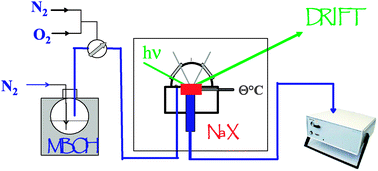Mechanism and deactivation process of the conversion of methylbutynol on basic faujasite monitored by operando DRIFTS
Abstract
The successive steps occurring during conversion of

* Corresponding authors
a
UPMC, University Paris 06, UMR 7197, Laboratoire Réactivité de Surface, F-75005 Paris, France
E-mail:
guylene.costentin@upmc.fr
Fax: +33 1 44 27 60 33
Tel: +33 1 44 27 60 05
b CNRS, UMR 7197, Laboratoire Réactivité de Surface, F-75005 Paris, France
The successive steps occurring during conversion of

 Please wait while we load your content...
Something went wrong. Try again?
Please wait while we load your content...
Something went wrong. Try again?
J. F. Groust, G. Costentin, J. M. Krafft and P. Massiani, Phys. Chem. Chem. Phys., 2010, 12, 937 DOI: 10.1039/B919733H
To request permission to reproduce material from this article, please go to the Copyright Clearance Center request page.
If you are an author contributing to an RSC publication, you do not need to request permission provided correct acknowledgement is given.
If you are the author of this article, you do not need to request permission to reproduce figures and diagrams provided correct acknowledgement is given. If you want to reproduce the whole article in a third-party publication (excluding your thesis/dissertation for which permission is not required) please go to the Copyright Clearance Center request page.
Read more about how to correctly acknowledge RSC content.
 Fetching data from CrossRef.
Fetching data from CrossRef.
This may take some time to load.
Loading related content
